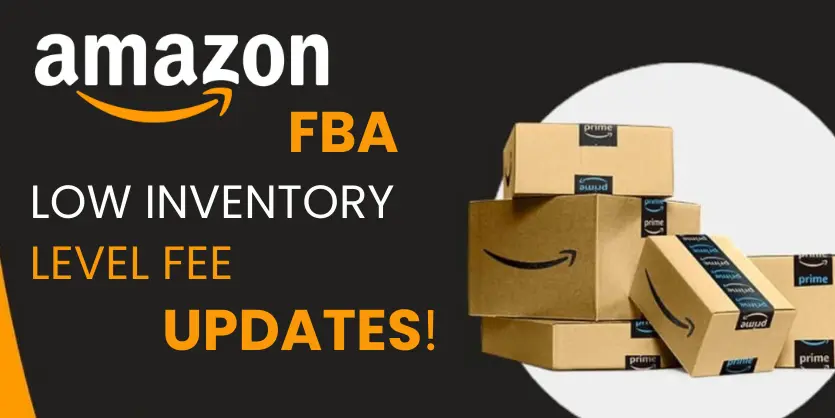Amazon has finally responded to sellers’ concerns about the low inventory level fee announced in December 2023. The initial reaction from the seller community was far from positive, leading to ongoing debates. Amazon has taken the feedback seriously and introduced some changes to the fee structure. But what are these changes, and will they benefit sellers? Let’s dive in and explore the details.
Extension of the Transition Period
First and foremost, Amazon has extended the transition period for the low inventory level fee to May 14. This extension provides sellers with an additional two weeks to adjust their inventory levels without incurring the fee. This delay can mean significant savings, potentially hundreds of dollars for some accounts. However, it’s important to note that once the transition period ends, the fees will apply.
Credits for Fees Incurred
Amazon has also announced that by May 31, sellers will be credited for any low inventory level fees incurred between April 1 and May 14. This is a crucial update for sellers who have already paid these fees, offering some financial relief. The extended period allows sellers to adjust their inventory levels to avoid future fees entirely.
Changes to Fee Application
In an effort to better target the low inventory level fee, Amazon has introduced three additional changes:
1. Seasonal and End-of-Life Products
Amazon has clarified that the low inventory level fee will not apply to seasonal products or end-of-life products. These are items no longer produced or supported by the manufacturer (like old model electronics) and products sold for specific seasons (like Halloween costumes or Christmas decorations). If these products have sold fewer than 20 units in the past 7 days, they are exempt from the fee. While not a perfect solution, this provides some flexibility for sellers managing unpredictable inventory levels for these products.
2. Inbound Handling and Processing Times:
Amazon has stated that low inventory level fees incurred due to excessive inbounding and processing times caused by Amazon or its managed services will be credited back to sellers by the 15th day of the following month. This is a positive step, as it acknowledges that delays outside the sellers’ control should not result in additional fees. However, sellers should remain vigilant and prepared to contest any discrepancies to ensure they receive these credits.
3. Prime Day Exception:
During Prime Day, when sales volumes spike and inventory levels become more unpredictable, Amazon will provide a time-bound exception on low inventory level fees for products included in Prime-exclusive Lightning Deals and Best Deals. This exception will apply in the weeks following Prime Day, offering some relief during one of the busiest times of the year for sellers.
The Bigger Picture
While these changes show that Amazon is listening to seller feedback, the overall sentiment among sellers remains cautious. The low inventory level fees add another layer of complexity to managing a business on Amazon. Sellers must now be more vigilant about their inventory levels and the potential fees that could be incurred. Amazon’s focus on customer satisfaction often comes at the expense of increased challenges for sellers.
Tips for Sellers
To navigate these changes, sellers should:
– Monitor Inventory Levels: Regularly review and adjust inventory levels to avoid unnecessary fees.
– Track Inbound Shipments: Keep detailed records of shipment times and be prepared to contest any delays caused by Amazon.
– Plan for Prime Day: Strategically plan inventory for Prime Day to take advantage of the fee exceptions for Lightning Deals and Best Deals.
Conclusion
In conclusion, while Amazon’s updates to the low inventory level fee provide some relief, they also highlight the increasing challenges of selling on the platform. Sellers must stay informed and proactive to minimize the impact of these fees on their businesses. For detailed information, sellers can refer to Amazon Seller Central and stay updated with the latest changes.
If you think this post has been helpful for you, please share this post with your friends and the e-commerce community. You can also check out our website www.ecomclips.com and get more updates! Keep browsing our blog to get more articles related to e-commerce. You can also mail us at info@ecomclips.com if you need any more help with Amazon.

